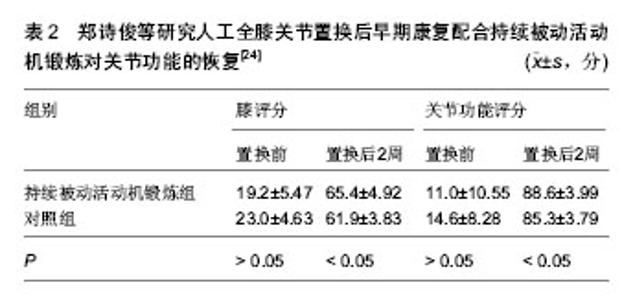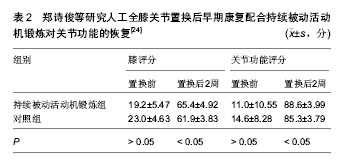| [1] 王爱民,李起鸿.人工关节置换术的现状及其进展[J].中华创伤杂志,2002,18(11):650-652.
[2] 陈凯敏,于哲一,谢青.不同运动疗法对全膝关节置换术后功能恢复的影响[J].中国康复医学杂志,2010,25(1):50-52.
[3] 程萌旗,郭永园,陈德胜,等.新型人工关节假体材料β钛合金Ti35Nb3Zr2Ta的生物相容性研究[J].中国矫形外科杂志,2013, 21(10):1017-1024.
[4] 李双,叶斌,孙宏伟,等.碳质涂膜人工关节在兔髋关节置换术中的应用研究[J].蚌埠医学院学报,2013,38(1):6-8.
[5] 陈烜,戴建平,刘金龙,等.人工关节材料及其改性研究[J].淮阴工学院学报,2010,19(5):10-14.
[6] 许燕飞,常敏,郭英,等.保留股骨颈联合陶瓷-陶瓷全髋关节置换术的初步应用体会[J].云南医药,2014,35(5):520-523.
[7] Martin Ihle,Sabine Mai,Werner E.Siebert,等.陶瓷球头和金属球头配伍聚乙烯臼杯的20年长期对比磨损研究[J].中华关节外科杂志(电子版),2010,4(3):63-65.
[8] 李永旺,孙俊英,骆园,等.大直径金属对金属与陶瓷对陶瓷全髋置换术的手术体会及近期疗效比较[J].中华矫形外科杂志,2011, 19(13):1067-1072.
[9] 张国强,王岩,陈继营,等.陶瓷对聚乙烯和金属对聚乙烯在全髋关节置换术后磨损的随访研究[J].中华关节外科杂志(电子版), 2010,4(3):4-7.
[10] 杨礼庆,李希,付勤,等.陶瓷对陶瓷与金属对聚乙烯全髋关节置换后的早期效果比较的病例对照研究[J].中国骨伤,2013,26(7): 561-564.
[11] 沈红星,陈裔英,马彬,等.早期综合康复疗法对全膝关节置换术后膝关节功能和ADL能力的效果[J].中国康复医学杂志,2010, 25(6): 577-579.
[12] 海德静,于敏华.强直性脊柱炎双侧髋、膝关节置换术后康复的临床研究[D].长春:吉林大学,2010:16-18.
[13] 严世贵,蔡迅梓,张建良,等.低频超声对万古霉素骨水泥药物释放的影响[J].中华骨科杂志,2006,26(3):191-195.
[14] 顾剑华,沈灏,张先龙.人工髋关节置换术后关节周围血肿形成的在的因及诊疗对策[J].中国矩形外科杂志,2008,16(10): 787-789.
[15] 尹向辉,张庆恩,张雪松,等.下肢关节置换术后下肢深静脉血栓形成的影响因素分析及防治对策[J].中国药业,2014,23(22):30-33.
[16] 孙银娣,黄小强,王效东,等.关节置换术后下肢肿胀的早期预防[J].第四军医大学学报,2005,15(3):31.
[17] 徐云,陈秀丽,季晓玲.关节置换术后下肢肿胀的早期预防体会[J].中国误诊学杂志,2008,11(2):28.
[18] Lenssen AF, Crijns YH, Waltjé EM, et al.Effectiveness of prolonged use of continuous passive motion (CPM) as an adjunct to physiotherapy following total knee arthroplasty: design of a randomised controlled trial.BMC Musculoskelet Disord.2006;7:15.
[19] Nugent-Derfus GE, Takara T, O'neill JK, et al.Continuous passive motion applied to whole joints stimulates chondrocyte biosynthesis of PRG4.Osteoarthritis Cartilage.2007;15(5): 566-574.
[20] Alkire MR, Swank ML.Use of inpatient continuous passive motion versus no CPM in computer-assisted total knee arthroplasty.Orthop Nurs.2010;29(1):36-40.
[21] Peters CL, Shirley B, Erickson J.The effect of a new multimodal perioperative anesthetic regimen on postoperative pain, side effects, rehabilitation, and length of hospital stay after total joint arthroplasty.J Arthroplasty.2006;21(6 Suppl 2): 132-138.
[22] 毕霞,吴岳嵩,成鹏.CPM在全膝关节置换术后康复中的应用[J].中国康复医学杂志,2004,19(7):556-558.
[23] 赵斌,曾宪辉,丰新建,等.持续被动运动在全膝关节置换术后康复中的应用[J].中医正骨,2014,26(9):19-21.
[24] 郑诗俊,陈欣杰,沈计荣.全膝关节置换术后早期康复配合CPM机锻炼对膝关节功能恢复的影响[J].中国康复理论与实践,2007, 13(4):380-381.
[25] 裘香敏.高龄股骨转子间骨折人工关节转换术的围手术期康复训练[J].中医正骨,2010,22(5):74-75.
[26] 廉士海,屠重棋,段宏.组合式半骨盆置换后康复干预8例报告[J].中国组织工程研究与临床康复,2008,12(30):5886-5889. |



